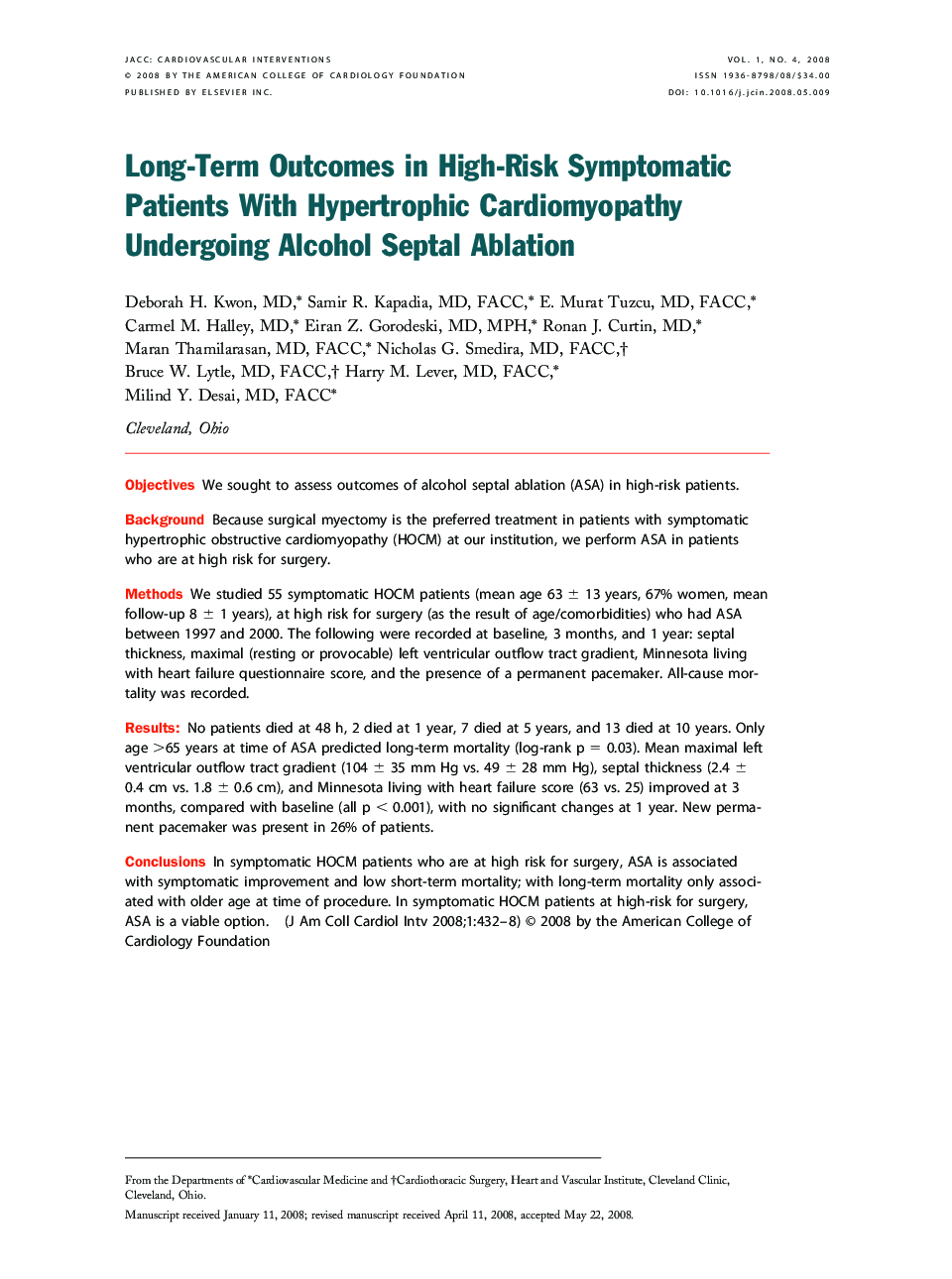| Article ID | Journal | Published Year | Pages | File Type |
|---|---|---|---|---|
| 2942087 | JACC: Cardiovascular Interventions | 2008 | 7 Pages |
ObjectivesWe sought to assess outcomes of alcohol septal ablation (ASA) in high-risk patients.BackgroundBecause surgical myectomy is the preferred treatment in patients with symptomatic hypertrophic obstructive cardiomyopathy (HOCM) at our institution, we perform ASA in patients who are at high risk for surgery.MethodsWe studied 55 symptomatic HOCM patients (mean age 63 ± 13 years, 67% women, mean follow-up 8 ± 1 years), at high risk for surgery (as the result of age/comorbidities) who had ASA between 1997 and 2000. The following were recorded at baseline, 3 months, and 1 year: septal thickness, maximal (resting or provocable) left ventricular outflow tract gradient, Minnesota living with heart failure questionnaire score, and the presence of a permanent pacemaker. All-cause mortality was recorded.ResultsNo patients died at 48 h, 2 died at 1 year, 7 died at 5 years, and 13 died at 10 years. Only age >65 years at time of ASA predicted long-term mortality (log-rank p = 0.03). Mean maximal left ventricular outflow tract gradient (104 ± 35 mm Hg vs. 49 ± 28 mm Hg), septal thickness (2.4 ± 0.4 cm vs. 1.8 ± 0.6 cm), and Minnesota living with heart failure score (63 vs. 25) improved at 3 months, compared with baseline (all p < 0.001), with no significant changes at 1 year. New permanent pacemaker was present in 26% of patients.ConclusionsIn symptomatic HOCM patients who are at high risk for surgery, ASA is associated with symptomatic improvement and low short-term mortality; with long-term mortality only associated with older age at time of procedure. In symptomatic HOCM patients at high-risk for surgery, ASA is a viable option.
